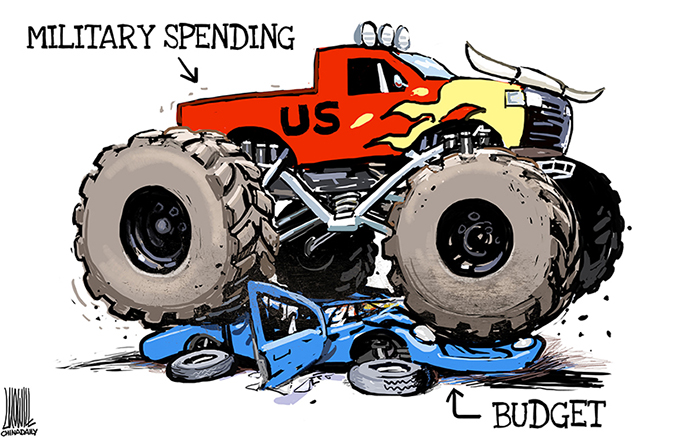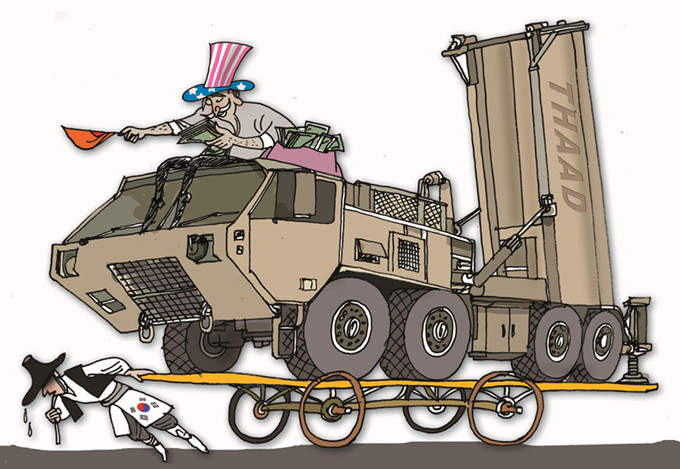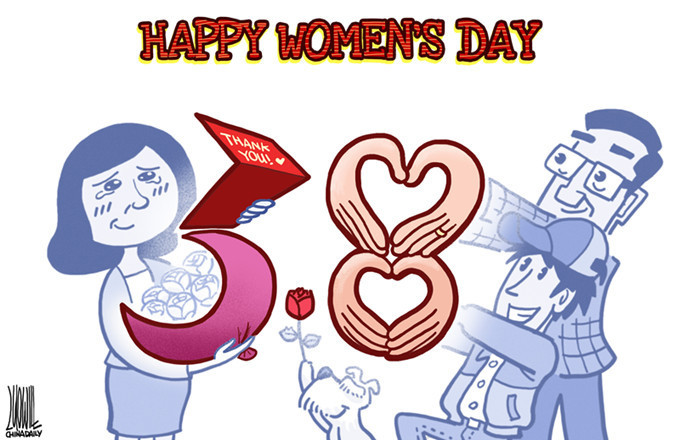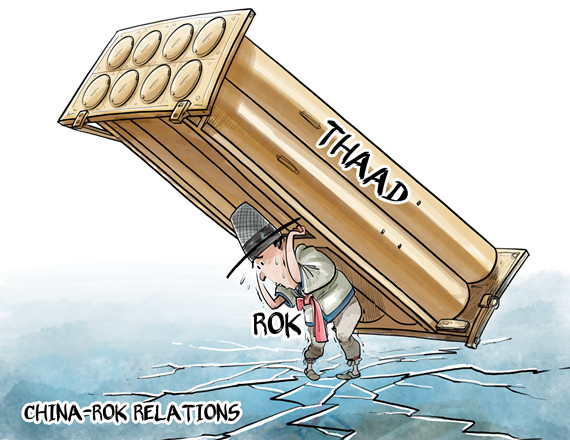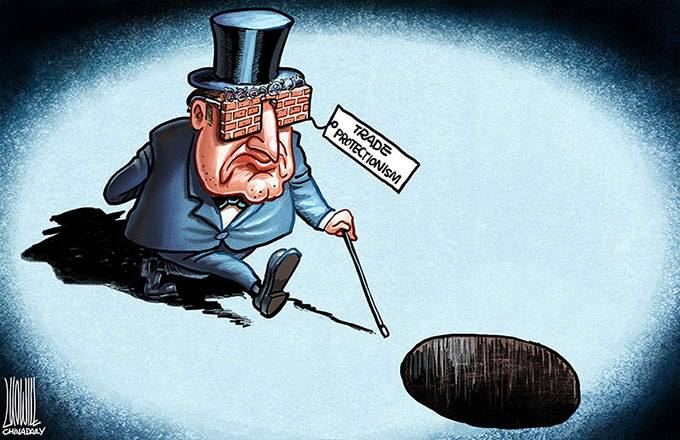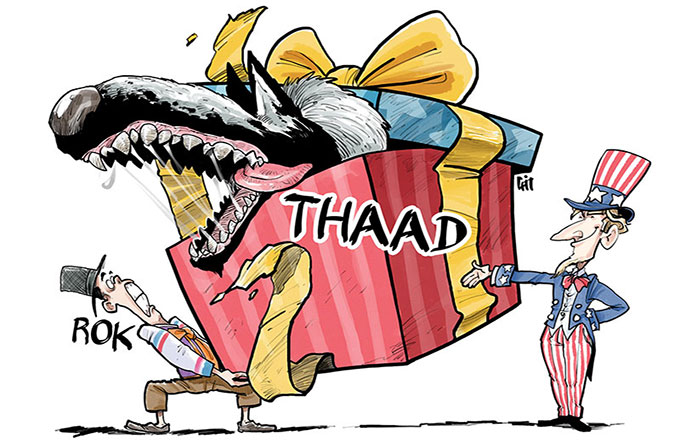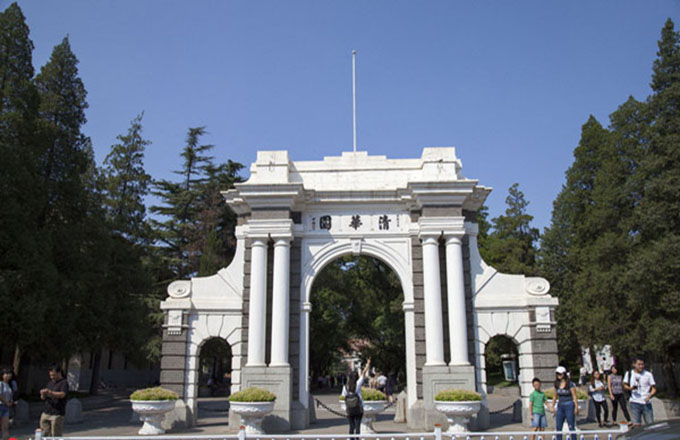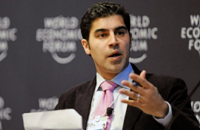Human rights record of the United States in 2016
IV. Racial Discrimination Worsened
In 2016, racial relations in the United States continued to deteriorate. There were repeated incidents of African Americans being shot by white police. Racial discrimination heavily influenced law enforcement and justice fields. There were systematic gaps between minority races and white people in employment and income. Minority people endured various discriminative treatments in schools and social lives. The USA Today website reported on July 14, 2016 that a poll found 52 percent of Americans believed racism against black people was an "extremely" or "very" serious problem.
According to a New York Times-CBS News survey, 69 percent of respondents said race relations in the United States were generally bad. Six in 10 US citizens said race relations were growing worse, up from 38 percent a year ago (www.usatoday.com, July 14, 2016).
Incidents of police killing African-Americans happened repeatedly. According to the Mapping Police Violence website, US police killed at least 303 African-Americans in 2016 (mappingpoliceviolence.org, December 2016).
On July 5, Alton Sterling, a 37-year-old African-American man, entered into clashes with others outside a convenience store in Baton Rouge, Indiana. After police arrived, they held him to the ground, straddled over his body and killed him with multiple gunshots (edition.cnn.com, July 8, 2016).
On July 6, police in Minnesota stopped a car with a malfunctioning rear light, and shot an African-American man Philando Castile, when he was getting his license and registration.
Castile's mother said her son was "black in the wrong place" and said there was "a silent war against African-American people."
The US government admitted that the two fatal shootings were not isolated incidents, but symptomatic of the broader challenges within the US criminal justice system (www.bbc.com, July 7, 2016).
Two consecutive police killings of African-Americans triggered violent protests nationwide.
On July 7, during a protest in Dallas, Texas, five police officers were shot and killed and nine more were injured by an African-American veteran, who said he wanted to kill white police officers to protest against police brutality (www.usatoday.com, July 14, 2016).
A Washington Post website report on police shootings in 2015 found that black Americans were 2.5 times as likely to be shot and killed by police as white Americans.
Unarmed black men were five times as likely to be shot and killed by police as unarmed white men (www.washingtonpost.com, December 6, 2016).
On Feb 17, Paul Gaston, a 37-year-old Cincinnati man, had just been in a serious car accident before he was shot and killed by three police officers. Police claimed Gaston appeared to reach for a gun in his waistband, but it turned out to be a fake one. A day before, a white man pointed a similar fake gun at the police in Cincinnati, but the police did not fire a shot, only peacefully arrested the man and charged him with menacing. The New York Daily News website commented that the two incidents and their differing outcomes highlighted the different police attitudes toward black and white men and the racial double standards in America were real (www.nydailynews.com, Feb 19, 2016).
The Washington Post website reported on Dec 6 that Edgar Maddison Welch, 28, entered a restaurant in northwest Washington while carrying a semi-automatic rifle. Welch walked backward out of the restaurant unarmed and with his hands up, and the police did not shoot him (www.washingtonpost.com, Dec 6, 2016).
In sharp contrast, on Sept 16, Terence Crutcher was shot and killed by police in Tulsa, Oklahoma. Crutcher had his hands up and back turned. Police officer also deployed Taser gun on him (www.cbsnews.com, Sept 19, 2016).
Racial discrimination in law enforcement and judicial fields was common. The New York Times website reported on Aug 10 that Baltimore relied on "zero tolerance" street enforcement, which encouraged officers to make large numbers of stops, searches and arrests for minor, highly discretionary offenses.
These practices led to repeated violations of the constitutional and statutory rights. Data from police departments around the country showed that officers using the zero-tolerance strategy focused their arrests on African-American men in poor neighborhoods, while ignoring the same offenses in wealthier white neighborhoods (www.nytimes.com, Aug 10, 2016).
A poll by the US Public Religion Research Institute showed that 64 percent of the African Americans said police mistreatment was a major problem in their community.
More than 81 percent black Americans said police killings of African-American men were part of a broader pattern of how police treat African-Americans (www.prri.org, Aug 7, 2016).
The Washington Post website reported on Aug 31 that five years ago, police in South Bend, Indiana, mistook 18-year-old high school senior DeShawn Franklin as a suspect and went inside his home without a search warrant. They punched him several times and used a stun gun on him.
In August, the jury found the officers violated Franklin's constitutional rights, ordered each of the defendants to pay Franklin and his parents $1 for the violation of their rights.
The total award was $18 in damages. Mario Sims, a senior pastor in South Bend, said the small amount of compensation sent a strong message to Franklin and his family: "your rights are worth a dollar" (www.washingtonpost.com, Aug 31, 2016).
Gap between minority and white people was widened in employment and income. According to the American Bureau of Labor Statistics, unemployment rate for African-Americans in December was close to two times the figure for white Americans. Unemployment rate for Latin Americans was 35 percent higher than white Americans (www.bls.gov, Jan 6, 2017).
The New York Daily News website reported on Sept 21 that the wage gap between blacks and whites was the worst in nearly four decades.
In 2015, the hourly pay gap between blacks and whites widened to 26.7 percent, with whites making an average of $25.22 an hour compared to $18.49 for blacks (www.nydailynews.com, Sept 21, 2016).
Almost 40 years ago in 1979, the hourly wage gap between black and white men was 22 percent, but the figure rose to 31 percent in 2015.
The hourly wage gap between black and white women grew from six percent to 19 percent (www.theguardian.com, Sept 20, 2016). The American National Women's Law Center reported that Latina women earned as little as 54 cents for every dollar white men made. Black and Latino women would lose more than $877,000 and $1 million respectively over a 40-year career compared to their white male counterparts (www.theguardian.com, Aug 16, 2016).
Disciplinary punishments are clearly differentiated among racial groups in public schools. Civil rights data from the US Department of Education from 2013 to 2014 show that among the 2.8 million students suspended from school, 1.1 million are African-Americans.
The likeliness of suspension for African-American students is 3.8 times that for white students (www.ibtimes.com, Aug 25, 2016).
The USA Today website reported on Oct 5 that the Indian River School District of Delaware had set up George Washington Carver Academy in Frankford as a segregated special-education school for discipline-violating students.
At the Indian River School District, white students who bring cellphones to school usually see their phones confiscated for one day, but an African-American student seen with a phone in the backpack is directly referred to Carver.
African-American students were sent to Carver in disproportionate numbers on various pretexts and they were segregated at Carver on arbitrary ground and for arbitrary periods of time while their educational needs were neglected.
A coalition of parents filed a lawsuit to the federal court, contending that the school had become a "dumping ground" for African-American students (www.usatoday.com, Oct 5, 2016).
Muslims suffer increasingly serious discrimination. The Washington Post website reported on Dec 9 that 82 percent of Americans believe Muslims in the US face discrimination and 57 percent say Muslims face "a lot" of discrimination, which is seven percentage points higher than in the last poll three years ago.
Surveys by Pew Research Center show that Muslims have, for years, ranked as the group that faces the most discrimination in the United States (www.washingtonpost.com, Dec 9, 2016).
Racial discrimination is strongly condemned by the United Nations. After conducting investigations across the US from Jan 9 to Jan 29, the UN Human Rights Council's Expert Group on People of African Descent expressed serious concerns about the police killings, the presence of police in schools, violence targeting the African American community with impunity, racial bias in the criminal justice system, and mass incarceration and the criminalization of poverty which disproportionately affects African-Americans.
Ms. Mireille France, who currently heads the UN Expert Group, stressed, "The persistent gap in almost all the human development indicators, such as life expectancy, income and wealth, level of education, housing, employment and labor, and even food security, among African-Americans and the rest of the US population, reflects the level of structural discrimination that creates de facto barriers for people of African descent to fully exercise their human rights (www.un.org, Jan 29, 2016).
The Expert Group's investigative report pointed out, the US government failed to fulfill its obligations of protecting the rights of Americans of African descent and that systematic and structural racism continues to negatively impact the civil, political, economic, social, and cultural rights of African Americans today.
The report particularly criticized police killings and racial bias in the criminal justice system. A large amount of cases prove that violence and overuse of lethal forces exist in law enforcement processes and these behaviors are mostly exempted from criminal punishment. "Police killings and the trauma it creates are reminiscent of the 'racial terror and lynching' of the past. Impunity for state violence has resulted in the current human rights crisis and must be addressed as a matter of urgency."
According to the report, police killings of unarmed Americans of African descent are only the tip of the iceberg of the widespread racial discrimination in the justice system.
The incarceration rate for African-American males is 5.9 times higher than the rate for white males, while the rate for African American females is 2.1 times higher than the rate for white females. African-Americans only constitute 14 percent of the US population, but they account for 36 percent of federal and state prisoners. African-Americans are regarded as dangerous criminal groups since childhood and face presumption of guilt.
African-Americans are more likely to face serious criminal punishments than white Americans, particularly on capital punishment. The report pointed out that African Americans are also in seriously unequal situations on education, medical care, housing, and employment. Twenty-six percent (more than 10 million) of African Americans remain mired in poverty and 12 percent live in what is known as "deep poverty".
In 2015, of the more than half a million homeless people in the US, African Americans constituted 40.4 percent (www.un.org, Aug 18, 2016).
- China issues report on US human rights
- Peace is fundamental premise, foundation for human rights protection: Chinese diplomat
- Work together to promote and protect human rights
- A Comparative Study on Human Rights Development Approaches in China and U.S.(Special Issue No.48 2016)
- West's perspective on human rights not the only one
- Global human rights development demands equal exchanges
- China-Germany forum on human rights development held in Beijing
- Survival, development are basic human rights: Xi


